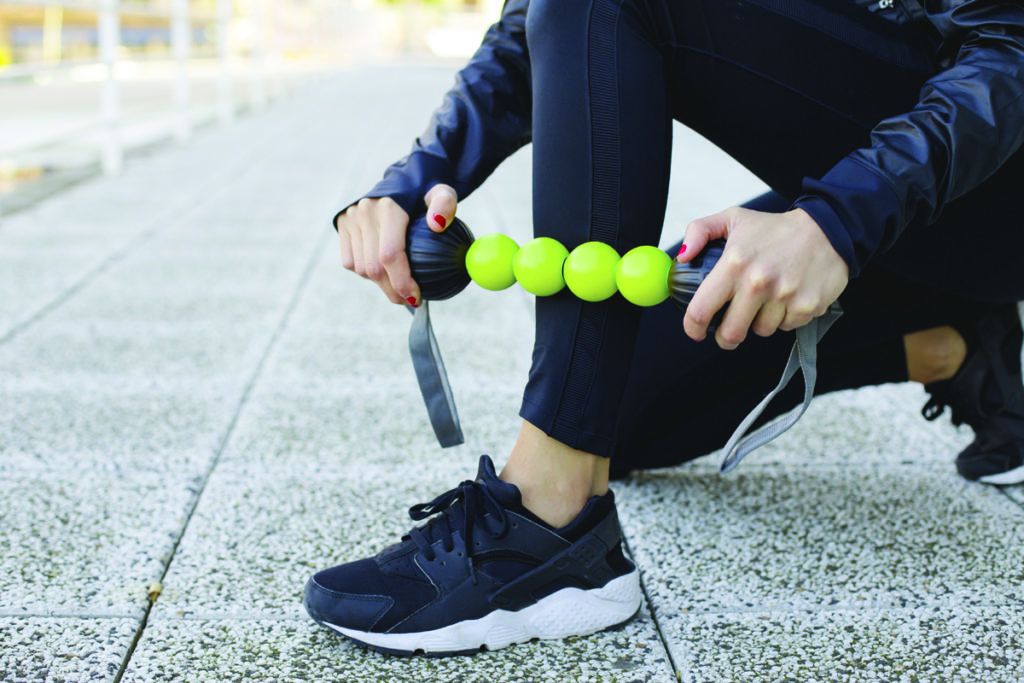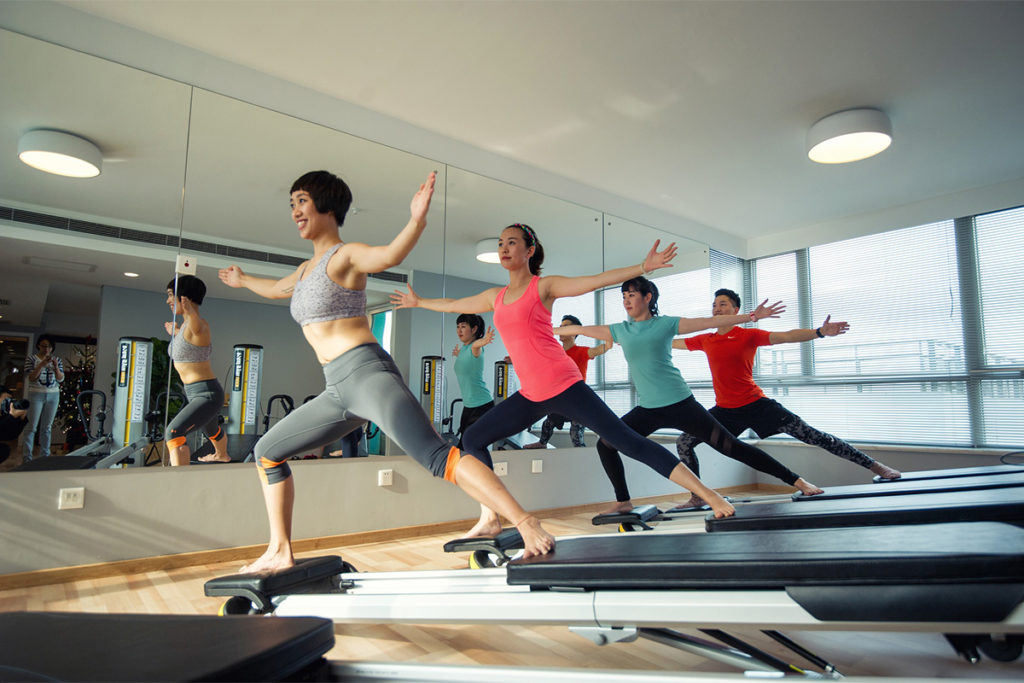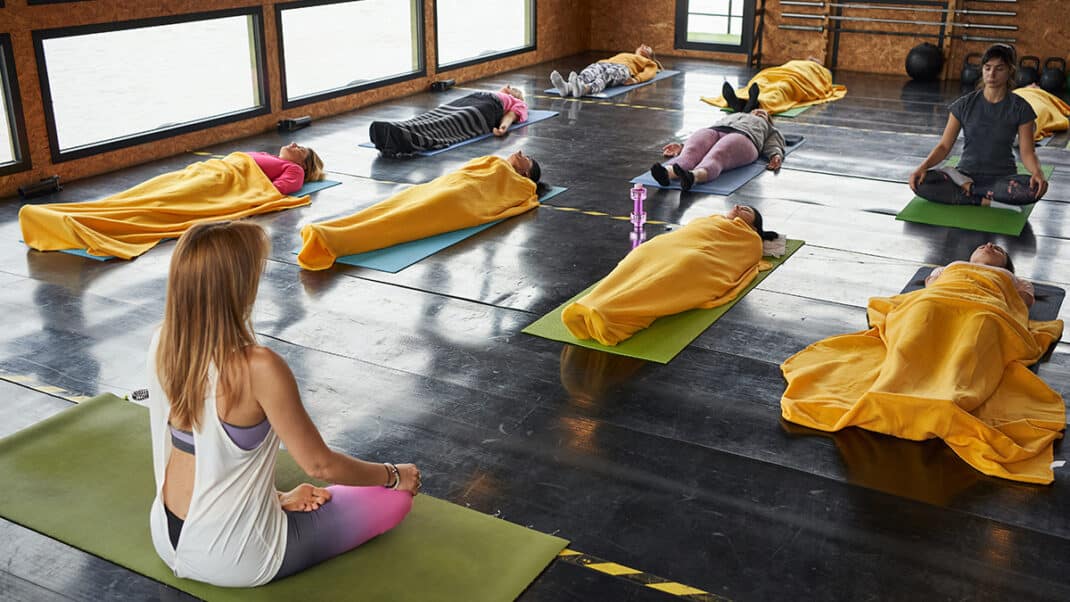So Much Equipment, So Much Fun
No matter what equipment you have access to, make the most of it and give members a great workout.
Before you teach your next class, take a look around. Have you noticed how crowded the studios have become? Not so much with people, but with equipment! What are we supposed to do with all that stuff? The thought of incorporating even a few items can be overwhelming. Well, help has arrived at last! We’re going to look at integrating equipment into two popular class formats: strength training and interval-based workouts.
Know Your Stuff
There are numerous approaches to designing a group exercise class using equipment. The first thing you want to do is take inventory and know what you’re working with. Make sure that you fully understand the intended purpose of the equipment and can communicate this effectively to members. Then look around and make a mental note of how much space you have to work with. Will members have enough room to execute each movement properly? When the equipment is not being used, can it be set aside so that no one walks on it or trips over it? Is there enough equipment for each person to have his or her own, or will members need to share? Make a list if it helps you get a good handle on what your equipment matrix is.
The Formats
Strength classes are popular on schedules across the country. You’re lucky if you teach for a facility that has one piece of equipment per person. If that’s not the case, this is your opportunity to shine and be creative. Think about pairing people up and doing partner work on certain exercises. This is a great way to introduce members to one another, and it’s also good for a little friendly competition. Divide the class in half for biceps curls, for example, and have one group work with handheld weights while the other uses tubing. The switch-off can be fun, too: during the transition, avoid total chaos by having participants place their equipment off to the sides. Do body weight exercises prior to having people retrieve the equipment and begin the next set.
Interval-based workouts are also seeing an increase in popularity. Again, depending on how much equipment you have, you can use several pieces per person and go back and forth to add variety. You can also use equipment for cardio intervals (see examples listed below). However, if you’re short on equipment, try setting up small groups of people or pairs, and place different pieces of equipment at each station. Then have members move from station to station, using the specified equipment for each exercise. Interval training with stations generates energy, and it’s an extremely effective way to use the cards you’ve been dealt.
Utilizing Common Equipment
Let’s take a look at five common pieces of equipment and ways to incorporate them into the formats discussed above:
Stability Balls
- Use the ball as a base for chest press, back rows, abdominals, etc.
- Try wall squats, an effective way to teach a proper squat.
- In pairs, stand back to back with a little space between you. Keeping the trunk steady, pass the ball, rotating back and forth.
- Try jumping jacks: bounce the ball when you jump out, and catch it overhead as you bring your feet together.
Tubing
- Combine tubing with weights to add resistance and to control the deceleration phase.
- In a seated position, with legs extended, secure the band around the feet to create an anchor; this will allow you to do a number of exercises for the back and rear delts.
- Hold a handle in each hand, and step onto the band with both feet, keeping the tubing equal in length on each side. Cross hands to increase resistance, and then hop onto one leg, pushing the other leg out to the side, creating a pendulum effect.
Dumbbells
- Use the weights during push-ups to increase difficulty and range of motion.
- Integrate one dumbbell to add intensity to any power move or to add resistance to abdominal work.
- Use dumbbells for unilateral training—this lets you really focus on the muscle group being worked.
Medicine Balls
- Use different-sized balls for core movement, rotation and coordination.
- Squeeze a ball between the legs to add resistance to abdominal training.
- Try a chest throw in pairs, making sure you are far enough apart to extend your arms on the throw.
Steps
- Increase the height of the step, and use it as a bench for chest presses, kneeling triceps extensions, etc.
- Line up several steps in the middle of the room, and work on opposite sides, individually or in pairs.
- Use one or more steps to create a plyometric station; jump onto and over the platforms.
The possibilities are endless. It’s only a matter of taking the time to carefully plan your classes and look creatively at the space and equipment you have to work with. Give your students variety by mixing it up. Don’t think of equipment as a burden, but as a means of enhancing your class and your students’ results!
Patrick Goudeau
Patrick Goudeau is one of the most sought after fitness experts in the world with more than 20 years of experience. Known for his innovative approach to movement, the King of ChoreographyÔäó has released 21 highly-acclaimed, award-winning workout DVDs. He is a former United States National Aerobics Champion, a trainer to the stars and a featured instructor on All-Star Workouts, the popular fitness show from the Discovery Channel and FitTV! Certification: NASM





